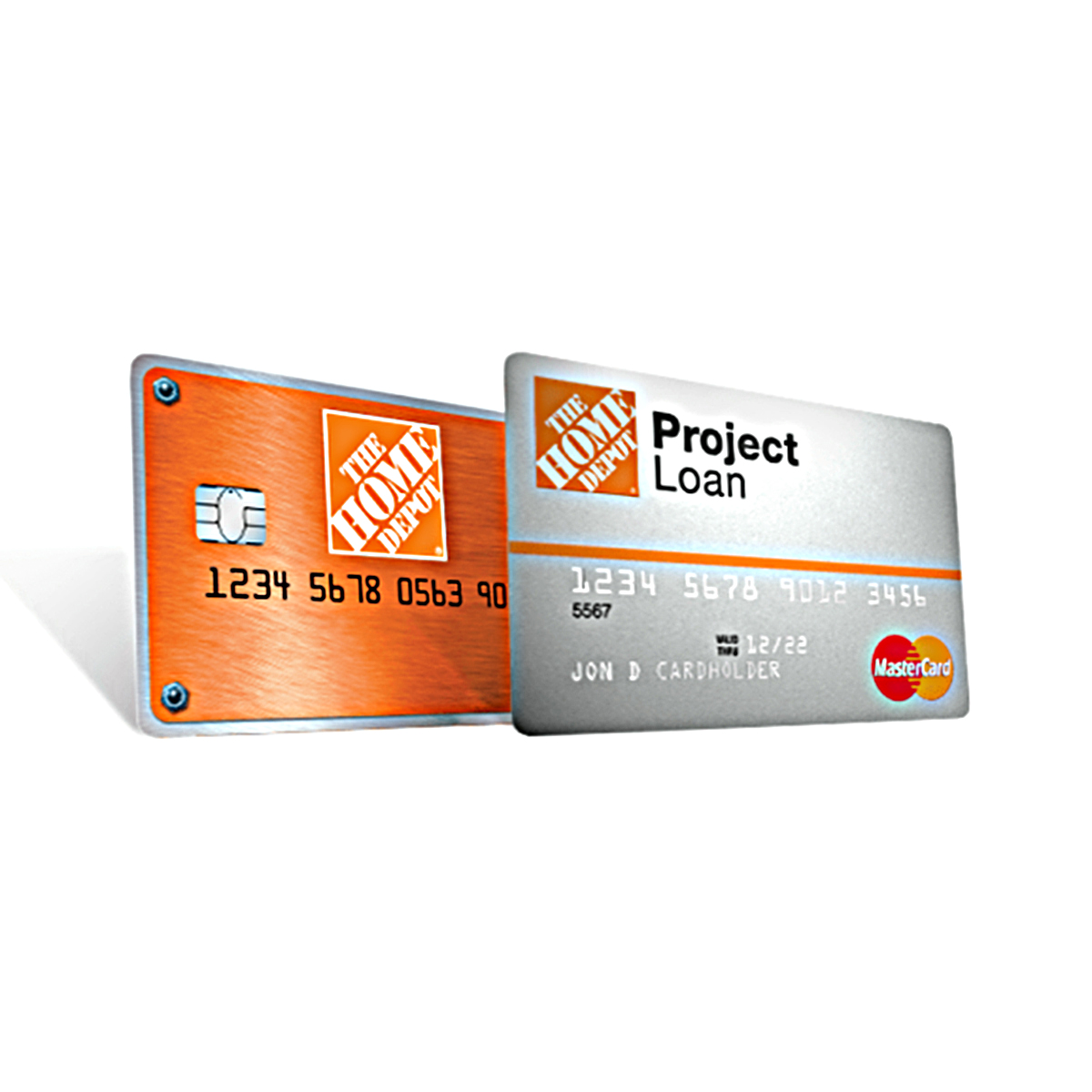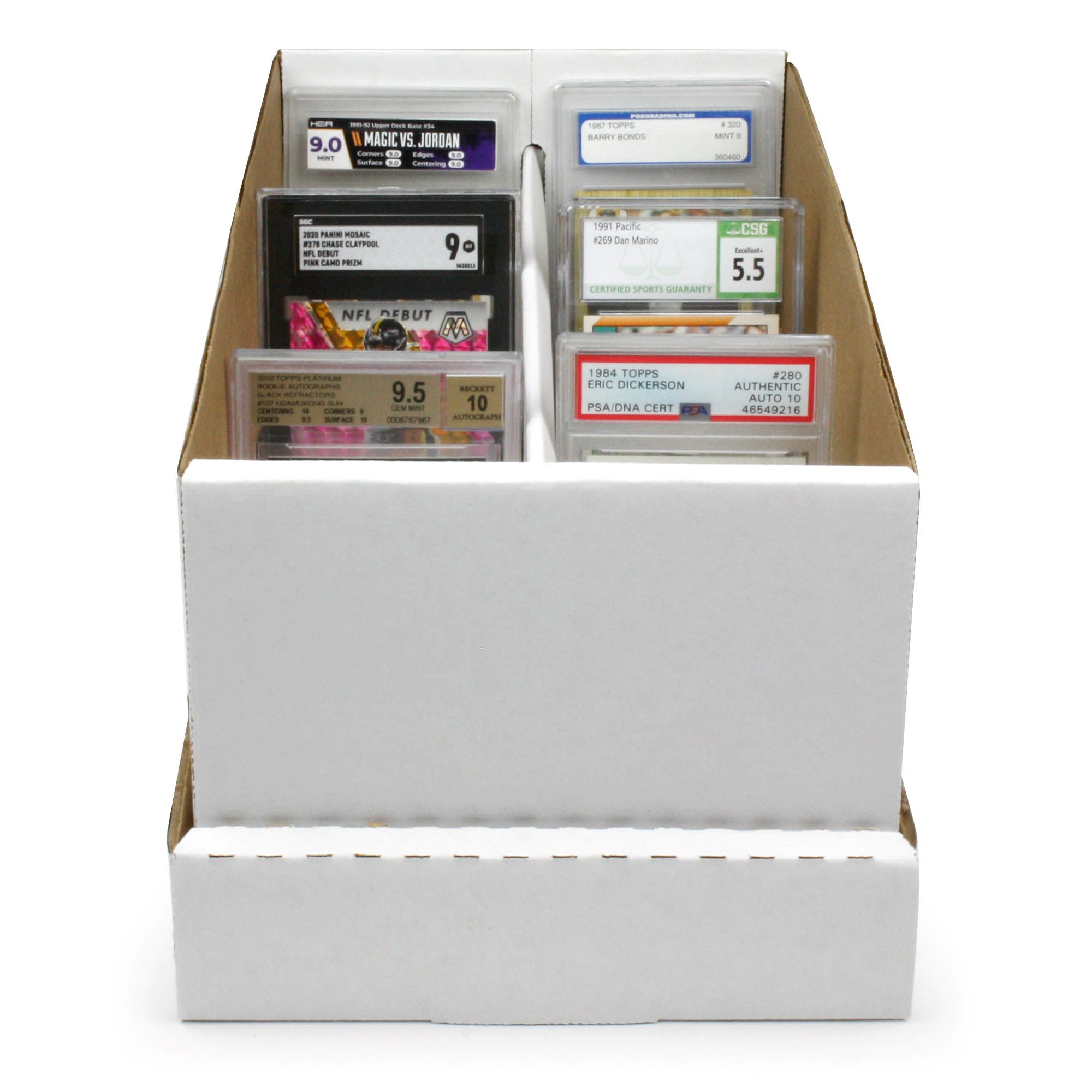Home>Articles>How To Store Credit Card Information In Database Sql Server


Articles
How To Store Credit Card Information In Database Sql Server
Modified: October 27, 2024
Discover effective ways to securely store credit card information in a SQL Server database. Explore expert articles for detailed insights and best practices.
(Many of the links in this article redirect to a specific reviewed product. Your purchase of these products through affiliate links helps to generate commission for Storables.com, at no extra cost. Learn more)
Introduction
With the exponential growth of e-commerce and online transactions, the need to store credit card information securely has become paramount. Companies must implement robust measures to protect sensitive financial data from unauthorized access and potential cyber threats.
In this article, we will explore the best practices for storing credit card information in a database, specifically focusing on SQL Server. We will discuss the importance of understanding credit card data security, database design considerations, encryption techniques, user access and permissions, PCI-DSS compliance requirements, setting up secure connections, implementing logging and auditing, and the significance of regularly monitoring and updating security measures.
By following these guidelines, businesses can ensure that customer credit card information remains safe, maintain trust, and comply with industry regulations.
Key Takeaways:
- Protecting credit card data in a database requires adherence to PCI-DSS standards, encryption, secure user access, and regular monitoring. Following these best practices ensures data security and compliance with industry regulations.
- Businesses must prioritize ongoing security measures, including threat monitoring, patch management, and employee training, to safeguard credit card information. Proactive measures are essential to maintain data integrity and customer trust.
Read more: How To Store Credit Cards On IPhone
Understanding Credit Card Data Security
Before delving into the best practices for storing credit card information, it is essential to have a thorough understanding of credit card data security. Credit card data consists of sensitive information such as card numbers, expiration dates, and cardholder names, which, if compromised, can lead to identity theft, fraud, and financial loss.
The Payment Card Industry Data Security Standard (PCI-DSS) defines the security requirements for any company that handles credit card information, including merchants, service providers, and financial institutions. It sets the guidelines to protect cardholder data throughout its lifecycle, including data storage, transmission, and processing.
PCI-DSS outlines different data security measures, such as:
- Restricting access to cardholder data to authorized personnel only
- Implementing strong access controls and authentication mechanisms
- Encrypting sensitive card data during transmission and storage
- Maintaining and regularly updating secure systems and applications
- Monitoring and regularly testing security systems and processes
By adhering to PCI-DSS requirements, businesses can significantly reduce the risk of credit card data breaches and protect the privacy and trust of their customers.
In addition to PCI-DSS, businesses also need to be aware of other data protection regulations, such as the General Data Protection Regulation (GDPR) in the European Union. This regulation sets stricter rules for handling personal data, including credit card information, and imposes heavy fines for non-compliance.
It is essential to stay updated on the latest industry standards and regulations to ensure the highest level of credit card data security.
Best Practices for Storing Credit Card Information
When it comes to storing credit card information in a database, there are several best practices that businesses should follow to protect this sensitive data. These practices include:
- Minimize Data Storage: Only store the minimum necessary data required for transaction processing. Avoid storing sensitive information such as CVV codes and limit the amount of identifiable customer data in your database.
- Use Strong Encryption: Encrypt credit card data both during transmission and storage. Utilize industry-standard encryption algorithms such as AES (Advanced Encryption Standard) to ensure data confidentiality.
- Separate Cardholder Data: Isolate credit card data from other customer data to minimize the risk of unauthorized access. Implement strong access controls and restrictions to limit access to only authorized personnel who have a legitimate need for such information.
- Implement Secure Hashing: Hash sensitive credit card data to protect the actual card numbers. Use one-way hash functions like SHA-256 or bcrypt to create irreversible hashed values, making it virtually impossible to retrieve the original data.
- Regularly Update Security Patches: Keep your database management system and web applications up to date with the latest security patches. Vulnerabilities in software can expose your database to potential attacks, so it is crucial to apply patches and updates promptly.
- Limit Database Access: Assign access privileges based on least privilege principles. Only grant access to individuals who need it for their specific roles and responsibilities. Regularly review and revoke access for former employees or restricted individuals.
- Implement Intrusion Detection and Prevention Systems: Utilize intrusion detection and prevention systems to monitor and protect your database from unauthorized access attempts and potential threats. These systems can help identify suspicious activities and block potential breaches.
- Regularly Backup Data: Implement regular data backup procedures to ensure that in the event of a data breach or system failure, you can restore your database to a secure state and minimize data loss.
By following these best practices, businesses can significantly reduce the risk of credit card data theft, maintain customer trust, and meet industry compliance standards.
Database Design Considerations
When it comes to storing credit card information in a database, the database design plays a crucial role in ensuring data security and integrity. Here are some important considerations for designing a secure database:
- Normalization: Use a normalized database structure to minimize data redundancy and ensure data consistency. This helps prevent the storage of multiple copies of credit card data and reduces the risk of unauthorized access.
- Separation of Sensitive Data: Design your database schema to separate sensitive credit card data from other customer information. This can involve creating separate tables or even separate databases to isolate credit card data and apply stricter security measures to that specific data.
- Data Access Controls: Implement proper access controls within your database, establishing roles and user permissions to restrict access to credit card information. Only authorized personnel should have the necessary permissions to view or manipulate credit card data.
- Audit Trails: Implement logging mechanisms to track and monitor any changes or access to credit card data. This audit trail can help identify any suspicious activities or potential security breaches and assist in forensic investigations if needed.
- Data Encryption: As mentioned earlier, encryption is crucial for protecting credit card information. Ensure that your database design includes fields to store encrypted credit card data securely. Implement encryption/decryption functions at the database level to handle these operations.
- Secure Password Storage: If your application requires user authentication and login credentials, follow industry best practices for storing passwords securely. Hash passwords using strong hashing algorithms and use salts to make the hashing process more secure.
- Regular Database Maintenance: Regularly maintain and update your database to ensure optimal performance and security. This includes applying patches and updates to the database system, monitoring performance, and conducting regular vulnerability assessments.
By considering these design principles, businesses can create a secure and well-structured database that protects credit card information, maintains data integrity, and minimizes the risk of unauthorized access or data breaches.
Encrypting Credit Card Data
Encrypting credit card data is a crucial step in ensuring the security and confidentiality of the information stored in a database. Encryption transforms the sensitive credit card data into an unreadable format, making it useless to anyone without the proper decryption keys. Here are some important considerations when encrypting credit card data:
- Choose Strong Encryption Algorithms: Select encryption algorithms that are widely recognized and considered secure. Strong encryption algorithms, such as AES (Advanced Encryption Standard), provide robust protection for credit card data.
- Implement Encryption at Rest: Encrypt credit card data when it is at rest in the database. This ensures that even in the event of unauthorized access to the database, the data remains encrypted and unreadable.
- Implement Encryption in Transit: Encrypt credit card data during transmission between the web application and the database. This prevents eavesdropping and unauthorized interception of data during the transfer process. Secure Sockets Layer (SSL) or Transport Layer Security (TLS) protocols are commonly used to achieve secure data transmission.
- Separate Encryption Keys: Store encryption keys separately from the encrypted credit card data. This adds an additional layer of security as accessing the encrypted data alone is not sufficient to decrypt it without the corresponding encryption keys.
- Key Management: Implement strict key management practices to control access to encryption keys. Only authorized personnel should have access to the keys, and proper security measures should be in place to protect the keys from unauthorized access or theft.
- Strong Passwords: Use strong, complex passwords for encryption key access. Utilize a secure key management system that enforces password complexity requirements and regularly encourages password updates.
- Regularly Update Encryption Algorithms: Stay updated with the latest encryption standards and algorithms. As technology and security measures evolve, it is crucial to assess and update encryption practices to ensure the highest level of protection for credit card data.
- Third-Party Encryption Solutions: Consider using third-party encryption solutions or libraries that have undergone rigorous testing and evaluation. These solutions often provide additional security features and can simplify the implementation of encryption processes.
By implementing strong encryption measures, businesses can protect credit card data from unauthorized access and mitigate the potential risks associated with data breaches.
Handling User Access and Permissions
Handling user access and permissions is a crucial aspect of securely storing credit card information in a database. Controlling and restricting access to sensitive data ensures that only authorized personnel can view or manipulate credit card information. Here are some best practices for handling user access and permissions:
- Principle of Least Privilege: Follow the principle of least privilege when granting access to the database. Only provide users with the minimum privileges necessary to perform their specific roles and responsibilities.
- User Roles and Groups: Define user roles and groups based on job functions and responsibilities within your organization. Assign appropriate permissions to these roles to control access to credit card data.
- Regular Access Reviews: Conduct regular reviews of user access and permissions to ensure they are still required and appropriate. Remove or update access for employees who have changed roles or are no longer with the organization.
- Two-Factor Authentication: Implement two-factor authentication (2FA) for user authentication. This adds an extra layer of security by requiring users to provide an additional authentication factor, such as a unique code from a mobile app, along with their username and password.
- Strong Password Policies: Enforce strong password policies for user accounts. Require complex passwords, regular password changes, and prohibit the reuse of previously used passwords.
- Account Lockouts: Implement account lockouts or temporary user suspensions after multiple failed login attempts. This helps protect against brute-force attacks and unauthorized access attempts.
- Monitor User Activity: Implement logging and monitoring mechanisms to track and monitor user activity within the database. This can help detect any suspicious activities or potential security breaches.
- Separate Admin Accounts: Restrict administrative access to a limited number of trusted personnel. Use separate administrator accounts with strong passwords to perform administrative tasks and restrict access to ordinary user accounts.
- Regular Security Awareness Training: Provide regular security awareness training to all users who have access to the database. Educate them on best practices, password hygiene, and the importance of maintaining data privacy and security.
By following these best practices, businesses can ensure that only authorized individuals have access to credit card data and mitigate the risk of unauthorized access or data breaches.
Use encryption to store credit card information in the database. SQL Server provides built-in functions like EncryptByPassPhrase and DecryptByPassPhrase to securely store and retrieve sensitive data. Always follow industry best practices for data security.
PCI-DSS Compliance Requirements
When storing credit card information in a database, it is essential to adhere to the Payment Card Industry Data Security Standard (PCI-DSS) requirements. PCI-DSS provides a set of guidelines and requirements for businesses to ensure the secure handling of cardholder data. Here are some key PCI-DSS compliance requirements to consider:
- Build and Maintain a Secure Network: Implement and maintain secure network infrastructure, including firewalls, to protect cardholder data from unauthorized access.
- Protect Cardholder Data: Store cardholder data securely by utilizing encryption technologies, such as secure hash algorithms and strong encryption protocols, to protect data both at rest and in transit.
- Maintain a Vulnerability Management Program: Regularly update and patch systems to ensure the security of the database and other systems involved in processing or storing cardholder data.
- Implement Strong Access Control Measures: Assign unique IDs to individuals with access to cardholder data and restrict physical and logical access to only authorized personnel.
- Regularly Monitor and Test Networks: Continuously monitor and track access to cardholder data and regularly test security systems and processes to identify vulnerabilities and potential vulnerabilities.
- Maintain an Information Security Policy: Establish and maintain a comprehensive information security policy that guides employees and outlines the necessary steps to ensure the security of cardholder data.
- Restrict Physical Access: Limit physical access to cardholder data by implementing secure access controls, surveillance systems, and visitor logs.
- Regularly Test Security Systems: Conduct regular penetration testing and vulnerability scans to identify and address any weaknesses or vulnerabilities in the database and associated systems.
- Encrypt Transmissions: Encrypt all transmissions of cardholder data over public networks to protect against unauthorized interception or access.
- Maintain Secure Systems and Applications: Keep all systems and applications used to process or store cardholder data updated with the latest security patches and configurations.
Compliance with PCI-DSS requirements is mandatory for any business that handles credit card data. It helps to protect cardholder data, build customer trust, and ensure the security of sensitive financial information.
Setting Up a Secure Connection to the Database
Establishing a secure connection to the database is essential to protect credit card data during transmission between the web application and the database server. Here are some key considerations for setting up a secure connection:
- Utilize SSL/TLS: Secure Sockets Layer (SSL) or Transport Layer Security (TLS) protocols provide encryption and integrity for data transmitted between the web application and the database server. Configure your database server to use SSL/TLS to encrypt the connection.
- Obtain SSL Certificates: Acquire valid SSL certificates from reputable certificate authorities (CAs) to establish a secure and trusted connection. Install the certificates on the web server and database server to enable encryption.
- Enforce Strong Cipher Suites: Configure the SSL/TLS settings to use strong cipher suites. Disable weak cipher suites and outdated protocols to ensure the highest level of security for the connection.
- Implement Certificate Pinning: Consider implementing certificate pinning on the client-side to ensure that the connection is established only with the expected server’s SSL certificate. This prevents potential man-in-the-middle attacks.
- Regularly Update SSL/TLS: Stay updated with the latest security patches and updates for SSL/TLS protocols. Upgrading to newer, more secure versions helps address vulnerabilities and maintain a secure connection.
- Strong Authentication Mechanisms: Implement strong authentication mechanisms, such as two-factor authentication or client certificate authentication, to ensure that only authorized users can establish a secure connection to the database server.
- Implement Firewall Rules: Configure firewall rules to allow connections to the database server only from trusted sources. Restrict access to the server to specific IP addresses or networks to minimize the risk of unauthorized access.
- Regularly Monitor Connection Logs: Enable logging for database connections and regularly monitor the logs for any unusual or suspicious activities. Log entries can help identify potential security breaches or unauthorized access attempts.
- Perform Security Auditing: Conduct periodic security audits to ensure the effectiveness of the secure connection setup. These audits can help identify any vulnerabilities or weaknesses that need to be addressed.
- Stay Informed about Security Best Practices: Stay updated with the latest security best practices and industry standards related to secure database connections. Subscribe to security advisories and follow recommended guidelines to enhance the security of your database connection.
By implementing these measures, businesses can establish a secure connection to the database, protecting the confidentiality and integrity of credit card data during transmission.
Implementing Secure Logging and Auditing
Implementing secure logging and auditing practices is crucial for maintaining the integrity, security, and compliance of the credit card data stored in a database. Secure logging and auditing enable businesses to track user activities, monitor access to sensitive data, and detect any unauthorized or suspicious activities. Here are some key considerations for implementing secure logging and auditing:
- Enable Database Logging: Configure the database server to enable detailed logging of all relevant activities, such as login attempts, data modifications, and access to credit card data. This allows for a thorough audit trail in case of any security incidents.
- Log Access to Sensitive Data: Ensure that logging includes access to credit card data. Log each instance of data retrieval, modification, or deletion, along with the user information associated with the actions.
- Centralize Log Collection: Implement a centralized logging system that collects logs from multiple sources, including the database server. Centralization simplifies log management and enables easier analysis and monitoring of security events.
- Encrypt Log Data: Encrypt log data to protect its confidentiality. Encryption ensures that even if logs are accessed by unauthorized individuals, the data remains secure and unreadable.
- Implement Log Integrity Controls: Implement measures to ensure the integrity of log data, such as digitally signing log entries or using hashes to verify the integrity of log files. This helps detect tampering or unauthorized modifications to log data.
- Establish Retention Policies: Define retention policies for log files, specifying how long logs should be retained. Retaining logs for an appropriate duration allows for forensic analysis and investigation of security incidents.
- Regularly Monitor and Analyze Logs: Regularly review and analyze log data to identify any abnormal activities, security violations, or suspicious patterns. Automated log analysis tools can help in the detection of security incidents.
- Implement Real-Time Alerting: Set up real-time alerts for critical security events or anomalies detected in the logs. This enables prompt response and mitigation of potential security threats.
- Regularly Review Audit Logs: Periodically review and audit the access logs and audit trails to ensure compliance with security policies and regulations. This helps identify any policy violations or areas that require improvement.
- Apply Access Controls to Logs: Implement strict access controls for log files, ensuring that only authorized personnel can access or modify log data. Limit access to individuals with a legitimate need to view or manage log files.
By implementing secure logging and auditing practices, businesses can ensure the accountability and traceability of activities related to credit card data, detect and respond to security incidents promptly, and meet compliance requirements.
Read more: How To Store Data In Database
Regularly Monitoring and Updating Security Measures
Regular monitoring and updating of security measures are vital for maintaining the security and integrity of credit card data stored in a database. As new threats and vulnerabilities emerge, it is essential to stay proactive and take appropriate measures to ensure the ongoing protection of sensitive information. Here are key considerations for regularly monitoring and updating security measures:
- Continuous Threat Monitoring: Stay informed about the latest security threats and vulnerabilities relevant to your database environment. Monitor industry news, security advisories, and vulnerability databases to stay updated on potential risks.
- Real-Time Intrusion Detection Systems: Implement intrusion detection and prevention systems (IDPS) to monitor the database and network for any suspicious activities or attempts to access or manipulate credit card data. Configure these systems to provide real-time alerts and notifications.
- Regular Security Assessments: Conduct regular security assessments, including penetration testing and vulnerability scanning, to identify any weaknesses or vulnerabilities in your database infrastructure. Address any identified issues promptly.
- Prompt Patch Management: Regularly update and apply security patches and updates to your database management system, operating system, web applications, and other software components. Promptly address any known security vulnerabilities through patch management.
- Monitor Database Logs: Regularly review and analyze database logs, looking for any suspicious activities or unauthorized access attempts. Monitor user activity, database connections, and data access patterns to detect any anomalies.
- Stay Compliant: Continuously assess and ensure compliance with industry standards and regulations, such as PCI-DSS. Regularly review and update security policies, procedures, and controls to align with the latest compliance requirements.
- Employee Training and Awareness: Provide regular security awareness training to all employees who have access to the database. Educate them about security best practices, safe data handling, and the importance of reporting any security incidents or concerns.
- Incident Response Plan: Develop and regularly update an incident response plan that outlines the steps to be taken in the event of a security incident. This includes procedures for identifying, containing, investigating, and responding to any breaches or potential data compromises.
- Regular Data Backup and Recovery: Implement regular data backup procedures to ensure that in the event of a security incident or system failure, you can recover the database to a secure state and minimize data loss. Test the backup and recovery process periodically.
- Engage Security Experts: Consider seeking the expertise of external security professionals or consultants who specialize in database security. They can provide valuable insights, conduct independent audits, and recommend improvements to your security measures.
By regularly monitoring and updating security measures, businesses can proactively identify and address potential security risks, ensure ongoing protection of credit card data, and maintain a robust defense against emerging threats.
Conclusion
Storing credit card information in a database requires careful consideration of security measures to protect this sensitive data. By following the best practices outlined in this article, businesses can significantly reduce the risk of unauthorized access, data breaches, and potential financial loss.
Understanding credit card data security and adhering to industry standards such as the PCI-DSS are critical for ensuring the secure handling of cardholder data. Additionally, implementing secure database design considerations, encrypting credit card data, and controlling user access and permissions are essential steps to safeguarding credit card information from unauthorized access.
Setting up a secure connection to the database, implementing secure logging and auditing, and regularly monitoring and updating security measures are vital for maintaining the confidentiality, integrity, and availability of credit card data.
It is important for businesses to stay informed about the latest security threats and vulnerabilities, regularly update software and security patches, and conduct regular security assessments to stay one step ahead of potential risks. Additionally, providing ongoing security awareness training to employees and having a well-defined incident response plan can enhance the overall security posture of the organization.
By following these guidelines, businesses can instill trust and confidence in their customers, comply with industry regulations, and protect the sensitive financial information entrusted to them. Safeguarding credit card data should always be a top priority, and implementing robust security measures is a fundamental step towards achieving this goal.
Frequently Asked Questions about How To Store Credit Card Information In Database Sql Server
Was this page helpful?
At Storables.com, we guarantee accurate and reliable information. Our content, validated by Expert Board Contributors, is crafted following stringent Editorial Policies. We're committed to providing you with well-researched, expert-backed insights for all your informational needs.














0 thoughts on “How To Store Credit Card Information In Database Sql Server”